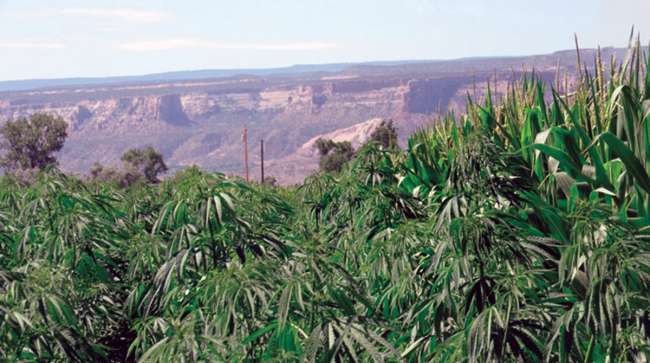Senior Reporter
Carriers, Law Enforcement Learning the Ropes for Hemp Transport

[Stay on top of transportation news: Get TTNews in your inbox.]
The chairman of a Commercial Vehicle Safety Alliance working group focused on hemp said that while interstate transport of the substance is legal, potential risks remain for motor carriers and drivers hauling it.
“So many of the questions that are out there from a regulatory standpoint are the very same questions for those of us on the enforcement side,” Capt. John Hahn of the Colorado State Patrol, told a group of executives attending a Dec. 2 virtual presentation at American Trucking Associations’ Safety, Security and Human Resources National Conference.
The CVSA working group has been discussing problems and possible solutions to lingering confusion about hemp transport for more than a year. While the Department of Agriculture in October 2019 passed an interim rule allowing interstate transport of hemp, there remains a lack of regulatory clarity for motor carriers, drivers and even law enforcement. USDA has yet to indicate when it will issue a final rule. The interim rule followed Congress’ late-2018 action legalizing industrial hemp.

Hahn
Hemp is a member of the cannabis plant family, and is legal at levels of .3% or less tetrahydrocannabinol, or THC, which is responsible for the psychoactive effects of marijuana.
Hemp is used for a number of products including cannabidiol, or CBD, a substance some believe to effectively treat such maladies as anxiety, cognition problems, movement disorders and pain. It also is used in common products such as paper, clothing and jewelry.
While the interim law has been on the books for more than a year, Hahn said confusion surrounding hemp remains. For instance, he noted that in addition to its resemblance to marijuana, police officers stopping a truck transporting hemp sometimes find a lack of proper documentation of a load and an overall lack of validity of the load.
Hahn said carriers also face some potential risks:
- Since hemp so closely resembles and smells like marijuana, a load of hemp can be delayed or seized by state law enforcement while it is tested for THC levels. “There’s frankly a lack of technology for the roadside inspector who happens to stop one of these trucks to determine the THC content of the load. At this point, there are no easy answers,” Hahn said.
- Carriers can face challenges finding an insurance company willing to insure a load of hemp.
- If law enforcement gets involved, it can lead to at least a temporary loss of equipment.
- Drivers, depending on state laws, can be detained or even arrested until a load is verified as hemp.
To seek clarification, Hahn said his working group, which includes law enforcement officers across the U.S. and Canada, has asked the Federal Motor Carrier Safety Administration to get involved. However, he said that the agency so far has not “taken a seat at the table.”
In Colorado, Hahn said discussions have been underway examining rules for the cultivation and transport of hemp from “seed to marketing.”
How did turkey-to-table change this year? What obstacles were suppliers going through to get turkeys to grocery stores? Join us as we talk with J.J. Smith, President of Valley Proteins, about how staying open-minded and flexible helped his business of delivering turkeys persevere. Hear a snippet, above, and get the full program by going to RoadSigns.TTNews.com.
Some of the recommendations so far in that state have called for standardized document requirements and rules and regulations for the transport of hemp. In addition, there is a plan to develop reciprocity and interstate compacts between states, Hahn said.
Hahn recommended that carriers become aware of their specific state laws regarding hemp, and also check with their state trucking associations for additional information.
“The other thing I would recommend is having some documentation onboard if you’re transporting hemp,” Hahn said. “There’s no guidance obviously as to what that documentation should contain. But in the absence of documentation, the absence of information lends itself to the officer at roadside trying to fill in the blanks, and those blanks may not be favorable.”
Want more news? Listen to today's daily briefing:
Subscribe: Apple Podcasts | Spotify | Amazon Alexa | Google Assistant | More


